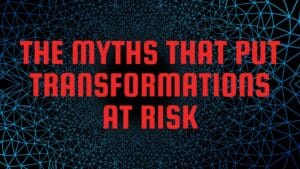Table of Contents
ToggleTariffs Are Back—And They’re Redefining the Global Economy
The U.S.–China trade war is intensifying again in 2025, bringing with it sweeping implications for global supply chains. As tariffs return and economic nationalism ramps up, American companies are facing tough decisions about where and how to manufacture their goods.
Industries that have long relied on low-cost Asian labor and infrastructure—like consumer electronics, automotive, and semiconductors—are at the center of this shake-up. And while some big players like Apple have lobbied for (and secured) tariff exemptions, most companies aren’t so lucky.
Apple’s Supply Chain Strategy: Lobbying, Loopholes, and Long-Term Risk
Apple is a case study in how corporate influence intersects with geopolitics. Amid rising tariffs, the U.S. granted exemptions for phones and computers—moves that came shortly after Apple reportedly chartered private cargo planes to fly iPhones out of Southeast Asia before tariff deadlines hit.
Why is Apple so exposed? Its supply chain is deeply embedded in China and neighboring countries. Although some production is shifting to Vietnam and India, the company remains heavily reliant on foreign manufacturers—raising questions about long-term risk and national security.
Reshoring U.S. Manufacturing: Easier Said Than Done
The idea of “bringing manufacturing back to America” has gained traction. But execution is proving far more difficult than political soundbites suggest.
Here are the top reshoring challenges:
- Loss of Know-How: Decades of outsourcing have hollowed out America’s manufacturing expertise. We no longer have the skilled labor or engineering knowledge to rebuild many of the machines or inputs needed.
- Infrastructure Gaps: Key components—especially in semiconductors—are still largely produced in places like Taiwan. Without domestic alternatives, the U.S. remains vulnerable.
- Lack of Subsidies: Unlike China, which strategically funds key industries, the U.S. offers limited financial incentives, making it hard for reshoring to scale.
Semiconductors: The Front Line of Supply Chain Vulnerability
Semiconductors are the heart of modern technology—and America doesn’t make enough of them. With over 90% of advanced chip manufacturing occurring in Taiwan, the U.S. faces a critical dependency on a geopolitically sensitive region.
As the U.S.–China trade war 2025 escalates, semiconductors have become a strategic flashpoint. The tech industry’s reliance on Asia—especially Taiwan—exposes the U.S. to massive economic and national security risks.
Key points:
- No Short-Term Fix: Building chip fabs takes years and billions of dollars.
- National Security Risk: A disruption in Taiwan’s supply could cripple entire industries, from defense to consumer electronics.
- Policy Response: The U.S. CHIPS Act is a start, but production timelines stretch into 2027 or later.
China’s Long Game vs. U.S. Short-Term Tactics
While the U.S. cuts off trade and manages industry exceptions, China plays a longer, more strategic game:
- Industrial Subsidies: China picks key sectors (e.g., green tech, chips, defense) and funds them at scale.
- Global Diversification: Chinese-owned manufacturers are expanding into Vietnam and Mexico to bypass tariffs.
- Supply Chain Entrenchment: The majority of raw materials, components, and manufacturing equipment are still sourced or built in Asia.
Industries Most at Risk in 2025
As the U.S.–China trade war 2025 intensifies, several industries face mounting pressure from supply chain disruptions, rising tariffs, and geopolitical uncertainty:
- Consumer Electronics
Most devices still rely on Asian parts and assembly lines, leaving manufacturers highly exposed to tariff hikes and sourcing instability. - Automotive
While some reshoring has occurred, much of the U.S. auto industry remains embedded in Mexico and Canada—offering limited insulation from the ripple effects of the U.S.–China trade war 2025. - Semiconductors
Perhaps the most fragile piece of the supply chain puzzle, with limited U.S. production capacity and high dependency on Taiwan amid growing trade and security concerns. - Mid-Sized Manufacturers
These companies lack political clout and are hit hardest by price increases, sourcing delays, and limited access to tariff exemptions—all exacerbated by the current U.S.–China trade war 2025 climate.
What Should U.S. Businesses Do Now?
- Diversify Supply Chains
Shift production to more politically stable regions like Mexico, India, or Eastern Europe. - Invest in Domestic Infrastructure
If you’re in manufacturing, start building relationships with U.S.-based suppliers and component makers. - Plan for Strategic Risk
Build risk models that account for future tariffs, shipping disruptions, and geopolitical instability.
Conclusion: The Supply Chain Reset Has Begun
Tariffs and trade tensions aren’t just politics—they’re forcing a fundamental reset in how American businesses source, build, and deliver. Apple’s response is a high-profile example, but behind the scenes, thousands of companies are facing the same existential question:
Can we keep depending on China, or is it time to rebuild from within?
The winners in 2025 will be those who take this moment not as a crisis—but as a turning point.
Frequently Asked Questions (FAQ)
Q: What is the U.S.–China trade war, and why does it matter in 2025?
A: The U.S.–China trade war refers to ongoing economic tensions between the United States and China, including the use of tariffs to control trade imbalances and protect domestic industries. In 2025, these tensions have escalated again, driving supply chain disruption, cost increases, and reshoring efforts across major industries like tech, automotive, and manufacturing.
Q: How are companies like Apple affected by U.S. tariffs?
A: Apple is deeply reliant on China and Southeast Asia for manufacturing. While it has received exemptions for products like iPhones and computers, it has also had to make emergency logistical moves—like flying in product stockpiles before tariff deadlines. Apple is slowly diversifying into India and Vietnam, but remains vulnerable to trade policy shifts.
Q: What is reshoring, and why is it difficult?
A: Reshoring is the process of bringing manufacturing operations back to the U.S. It’s difficult due to lost technical knowledge, outdated domestic infrastructure, and a lack of government subsidies. U.S. manufacturers often struggle to replicate the cost-efficiency and scale found in Asia.
Q: What industries are most vulnerable to global supply chain shifts?
A:
- Consumer electronics (e.g., smartphones, laptops)
- Automotive manufacturing
- Semiconductors and microchips
- Mid-market manufacturers without global sourcing leverage
These industries face the greatest risk due to their reliance on Asia for components, labor, or raw materials.
Q: Can U.S. businesses avoid tariff impacts?
A: Some companies try to mitigate tariff exposure by shifting manufacturing to tariff-exempt countries like Mexico, Vietnam, or India. Others apply for exemptions, restructure supply contracts, or invest in domestic partnerships—but these strategies can be costly and complex.
Q: What is the long-term solution to supply chain instability?
A: Long-term stability will likely come from a combination of U.S. industrial policy (e.g., subsidies, infrastructure investment), increased domestic manufacturing capacity, and a globally diversified supplier base. Businesses should invest in strategic supply chain risk management now to remain competitive over the next decade.






